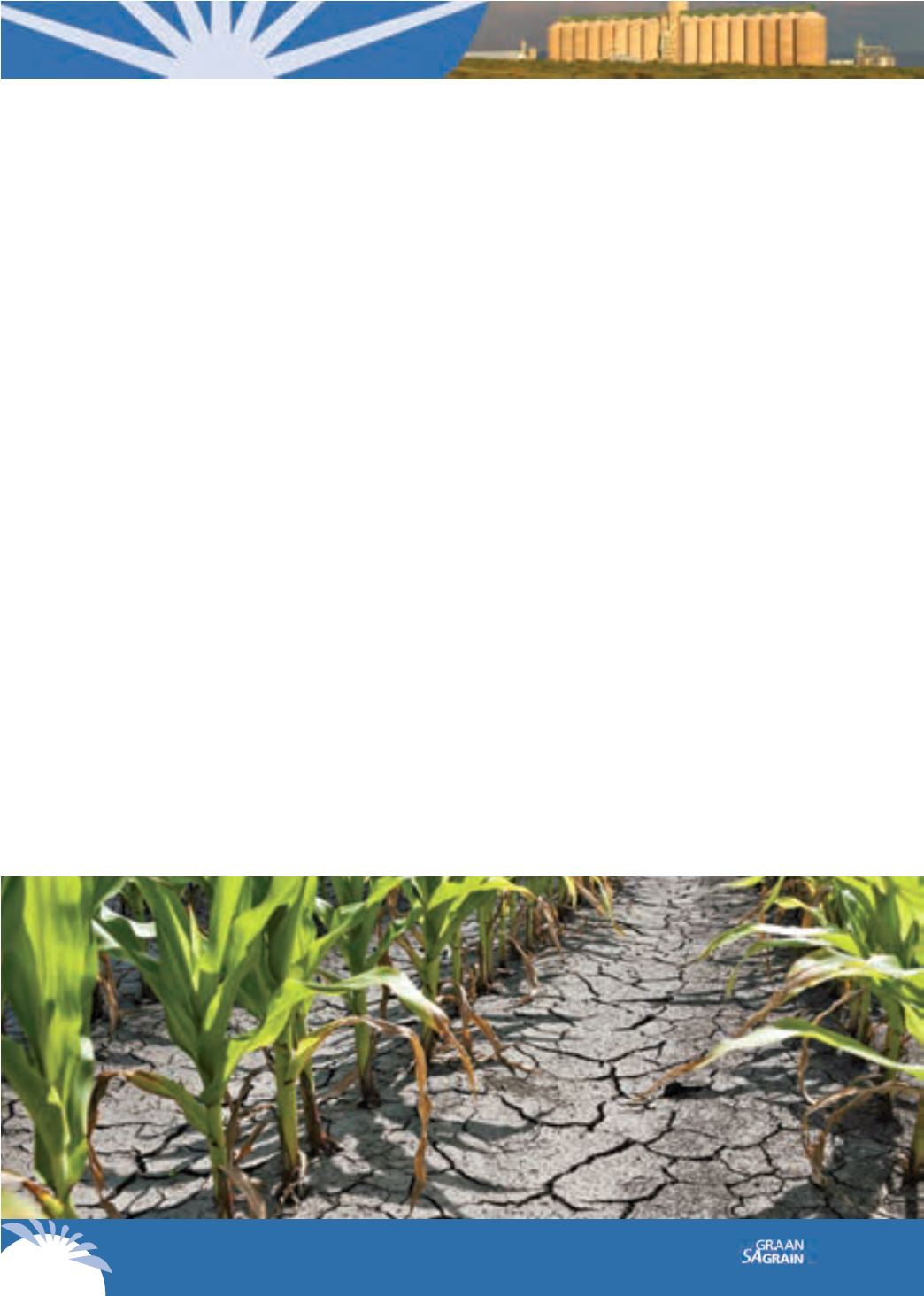

14
GRAANGIDS
2017
GRAIN GUIDE
Agricultural management strategies
for climate change
Strategies and actions to adapt to climate change will be needed in multiple areas in the agricul-
tural sector.
Farms will need to be managed differently to reduce the risks posed by climate
change.
It will be crucial for producers to maximise gains and minimise losses of water, either from
rainfall or irrigation.
In cropping systems, climate change and variability may affect soil health and plant growth
through:
• Reduced or erratic rainfall and more frequent and severe periods of drought that lower the
capacity of soils to make water and nutrients available to plants.
• More intense rainfall events that increase the risk of soil erosion by water and wind (through
rain splash, accelerated runoff, strong winds).
• Increased heat waves and soil surface temperatures with greater rates of mineralisation of soil
organic matter (SOM).
One of the most important sets of tools in our adaptation tool box will be innovative conserva-
tion agriculture (CA) systems and practices that improve soil health. Producers are encouraged to
practise CA for multiple reasons, such as to improve productivity, minimise soil erosion, alleviate
compaction and provide fodder for livestock, but it is also a primary tool for adapting to and
mitigating the impacts of climate change. Reducing greenhouse gas emissions and sequestering
carbon per kilogram of a given output might well be, for food security and agriculture, one of the
main targets and opportunities. The following CA practices can be used by producers to simulta-
neously protect the productive capacity of land, the environment and sequester carbon:
•
Increase soil water-holding capacity by improving SOM content.
SOM is vital, particularly
in sandy and silty soils, to produce soil aggregation, as it acts as a binding agent drawing to-
gether and holding individual soil particles into soil aggregates. A well-aggregated (structured)
soil, particularly the topsoil where SOM is commonly greatest, has far greater ability to conduct,
store and release to plants rain and irrigation water. SOM can retain about twenty times its
weight in water. Higher SOM content will also make crops more resilient to drought by
retaining additional water.
•
Use no-till planting to reduce soil disturbance, breakdown of SOM and soil structure, con-
sequently losing less water through evaporation.
Specialised no-till planters, especially disc
planters, minimise soil disturbance and soil degradation.

















